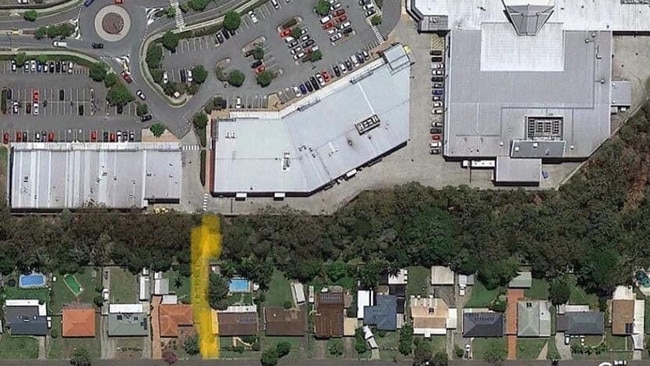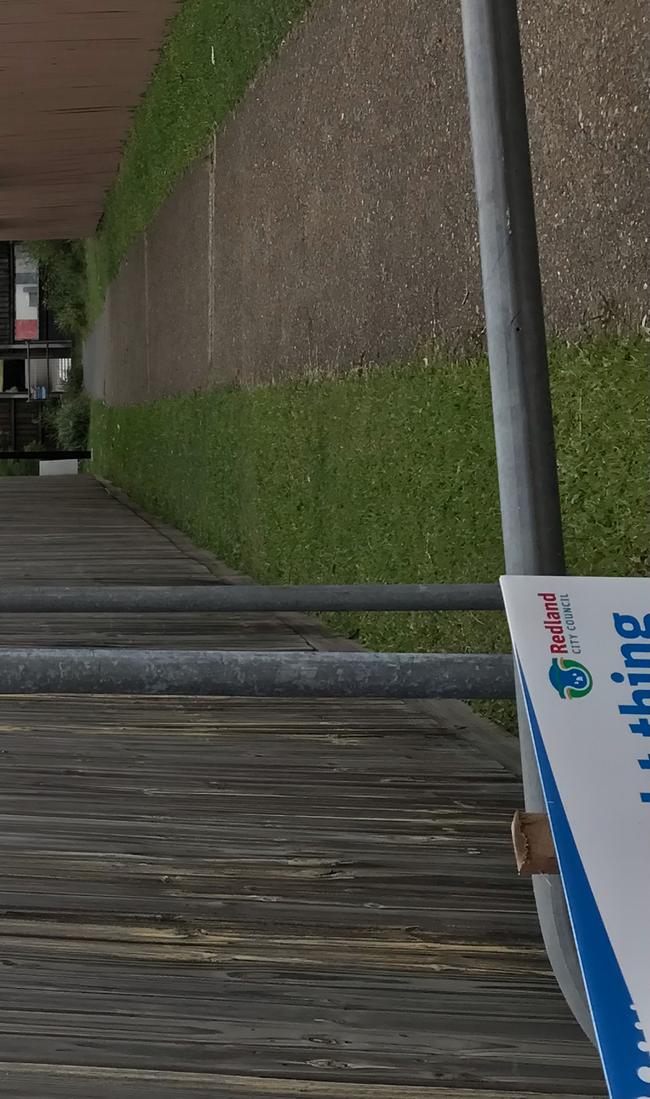Ombudsman investigates crime hotspot after Council orders pub gate to be opened all night
The state watchdog will investigate an alleyway where a council has ordered a gate to a tavern near houses to be opened all night. WATCH the video as police hunt for a man in the area.
Redlands Coast
Don't miss out on the headlines from Redlands Coast. Followed categories will be added to My News.
A poorly lit laneway, where a police officer was brutally assaulted, will be part of a state government safety investigation after complaints a council has failed its duty to monitor crime.
The Queensland Ombudsman will investigate the crime rate and the number of Redland City Council safety audits at Teak Lane, a tree-lined path linking houses to shops and a tavern at Victoria Point.
Assistant Ombudsman Craig Allen announced the investigation two weeks after Redland Council ordered the removal of a lockable gate, which residents claimed protected them from rowdy pub patrons and late-night crooks.
In a letter to resident Maria Sealy, whose home adjoins the Teak Lane easement, Mr Allen acknowledged Council had not responded to residents’ concerns that a safety audit had not been done on the easement since 2017.

“Nor did the council expand on what the current crime statistics reveal about the area and what the crime statistics need to report in order to enliven the requirement to conduct a safety audit,” he wrote.
“You have requested an external review of the council’s response to your complaint.
“In particular, you have expressed that you would like the council to undertake a new
safety audit and implement new crime prevention measures for Teak Lane.”
Ms Sealy and her neighbours, whose homes back on to Teak Lane and the busy Victoria Point Tavern and late-night restaurant precinct, have begged Council since 2010 to keep the gate locked after 9pm.
Buck passing from council, state and local politicians and the shopping centre since a Planning and Environment Court case over developing the land in 2017 has forced residents to install their own security cameras to monitor the area.
Although the land is owned by the state government, Council is responsible for managing the easement.
The fence and gate are owned by HomeCo, which owns the shopping precinct.
Last month, the council ordered HomeCo to leave the gate open all night after it received two petitions from about 100 people in May calling for the gate to stay unlocked for patrons to the pub, which shuts at 4am.
Ms Sealy said she had lost sleep since the council’s all-night gate order on May 19.
“The first night it was unlocked, police arrested a teen who had jumped into the next-door neighbour’s yard just after 9.30pm,” Ms Sealy said.
“I have witnessed others being brutally beaten up outside my house and police looking in the bushes in the dark for criminals.
“The council had previously asked the shopping centre to trial locking the gate at different times including at 4pm – which is ridiculous and was designed to upset the school kids and parents who legitimately use the gate.
“That just aggravated the situation and provoked the petition which has resulted in the gate open all night and no protection from drunken behaviour, violence and crime.”

Redlands MP Kim Richards said she had no power over locking the gate or the land, which was under Council jurisdiction, but said the area had a mobile police patrol based at Wynnum.
Council also said it did not control the gate, even though it had previously undertaken “daily locking and reopening of the access gate through a contracted security patrol”.
The council referred questions about the gate being opened all night to HomeCo, which also said it had no control over the gate.
Homeco said it was forced to unlock the gate after the council order.
“It is operated by the council as it is a public easement and it is currently open full time, as directed by the council,” HomeCo said.
“We will continue to work with the council and the local community proactively as appropriate, as we have always done.”
But the Council disputed that.
“Redland City Council did not order the removal of the lockable gate. Council was approached by the shopping centre to confirm that the trial of reduced lockable hours was not successful (as evidenced by the two petitions) and sought Council’s support for the shopping centre’s decision in relation to the gate,” the council said.
It is unknown whether the Ombudsman review will go further than investigating whether the council had failed to conduct adequate safety audits since the court case in 2017.

However, in his letter to the residents, the Ombudsman said he was aware of a formal complaint lodged with the council about swearing, loitering, drunken behaviour, graffiti and people urinating on residents’ fences late at night, in breach of council by-laws.
Council said it had conducted many safety audits over the years and provided a table of some of the recommendations it had implemented after those assessments.
“Council undertakes safety audits when crime statistics support the need and takes community safety seriously,” it said.
“Council has previously undertaken several safety actions in the laneway, including site maintenance, graffiti and vegetation removal, installation of lighting and signage, improving pedestrian visibility and safe passage, daily locking and reopening of the access gate through a contracted security patrol and improved laneway access for police and security patrols.”





